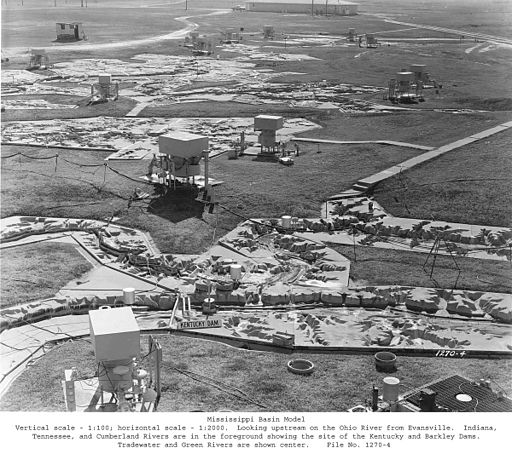Physical models

The most recent episode of 99% Invisible tells the story of the Corp of Engineers' enormous physical model of the Mississippi basin, nearly half of the area of the continental US. Spanning over 200 acres, the model was built during WWII and was shut down in 1993.
Here are some of my favorite lines from the show:
The reason engineers continue to rely on [physical models] is because today, in 2016, we still do not have the computers or the science to do all the things that physical models can do. "
Hydraulic engineering gets into some of the most complicated math there is. Allegedly when Albert Einstein's son Hans said he wanted to study how sediment moves underwater, Einstein asked him why he wanted to work on something so complicated.
The physics involved happen on such a small scale that we still haven't built equations complex enough to capture them. And so Stanford Gibson, a world-class numerical modeler, is one of the most ardent supporters of physical models.
But then I have a quibble. The show goes on to say "a physical model doesn't require equations at all." That's not true. When you build a small thing to study how a big thing works, you've got to have some theory relating the behavior of the two. If the real thing is 1000 times bigger than the model, does that mean you can simply multiply measurements from the model by 1000 to predict measurements of reality? Sometimes. Some effects scale linearly, but some do not.
It would have been more accurate to say a physical model doesn't require as many equations as an entirely mathematical model. The physical model is a partial mathematical model because of the mathematics necessary to extrapolate from the model to the thing being modeled.
Another line from the show that I liked was a quote from Stanford Gibson, introduced above.
The idea that science demystifies the world, I just don't understand that. I feel that the deeper down the scientific rabbit hole I go, the bigger and grander and more magical the world seems.
Related post: Toy problems